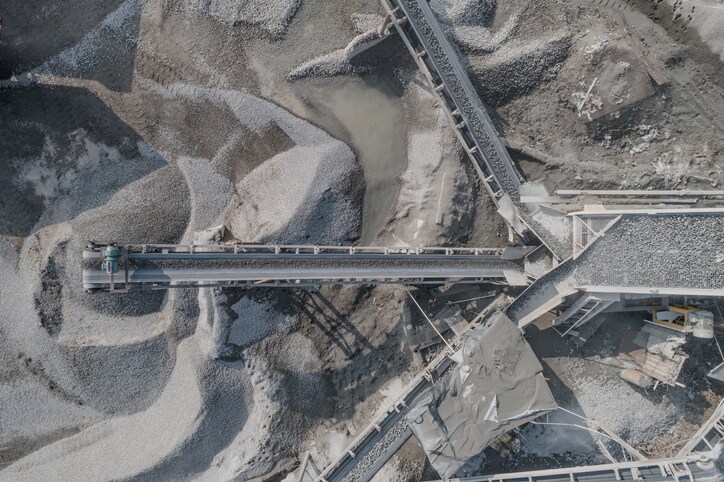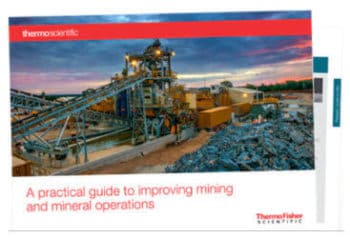 If you are involved in any mining operation, you are aware of the large conveyor belts used to carry bulk materials. In the cement industry, it is not uncommon for these conveyor belts to have an online elemental analyzer installed on them.
If you are involved in any mining operation, you are aware of the large conveyor belts used to carry bulk materials. In the cement industry, it is not uncommon for these conveyor belts to have an online elemental analyzer installed on them.
These online elemental analyzers are used to provide information to cement producers to make material blending and sorting decisions which optimize process control. These systems are designed to integrate onto a conveyor belt line and continuously measure the chemical composition of raw materials being carried by the conveyor line without touching the material. It analyzes the entire material stream in process and not a partial side stream or samples taken from the main stream. With real-time analysis, you can achieve consistent product quality, improved efficiency, minimized process upsets, increased throughput, reduced energy consumption and extended quarry or mine life.
How do they work?
The analyzer assembly fits around the conveyor and provides the means to analyze the full flow of raw material. The equipment provides real-time online elemental analysis of an entire raw material process stream using either Prompt Gamma Neutron Activation Analysis (PGNAA) or Pulsed Fast Thermal Neutron Activation (PFTNA) technology, and does the following:
- Irradiates the material with neutrons. The analyzer carries a neutron source; this may be a spontaneously fissioning isotope or an electronic neutron generator. Industry standard radioactive material for this purpose is Californium-252, which decays to its first half-life point in 2.646 years and is replenished at that time.
- Exposes the material to be analyzed to the neutron bombardment and its resulting gamma rays to the detectors. The analyzer has a tunnel through which the material slides on a conveyor belt between the neutron sources (below the belt) and the gamma ray detectors (above the belt).
- Detects the gamma ray emissions. The analyzer carries detectors which convert the captured gamma rays to measurable and countable electronic signals. The analyzer uses the signals to identify the gamma rays origins, which are the elements to be measured.
- Processes the signals coming from the detectors. The analyzer has digital signal processing electronics and analysis software to calculate and display a variety of analysis and related process information useful to the plant operator.
- Shields personnel from neutron and gamma radiation leakage. The analyzer carries several tons of radiation shielding materials to ensure radiation levels are well below those considered hazardous by government and industry authorities.
Continuous online analysis and monitoring of material composition is key to optimizing process control. Through controlling the chemistry of the material, there is less usage of expensive materials, less process upsets and improved operational efficiencies. Click the link to view an animated video of a bulk material analyzer in action.
Additional Reading:
To learn more about Prompt Gamma Neutron Activation Analysis (PGNAA) or Pulsed Fast Thermal Neutron Activation (PFTNA) technology, download the ebook:A Guide to PGNAA and PFTNA Technology for Non-Scientists






Leave a Reply